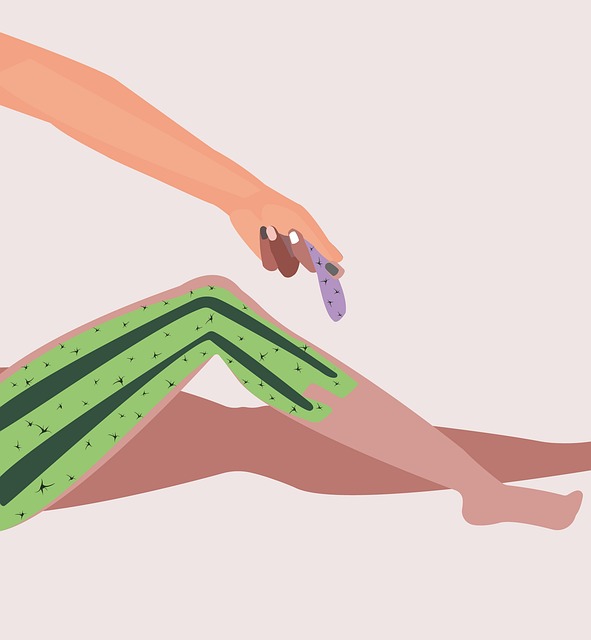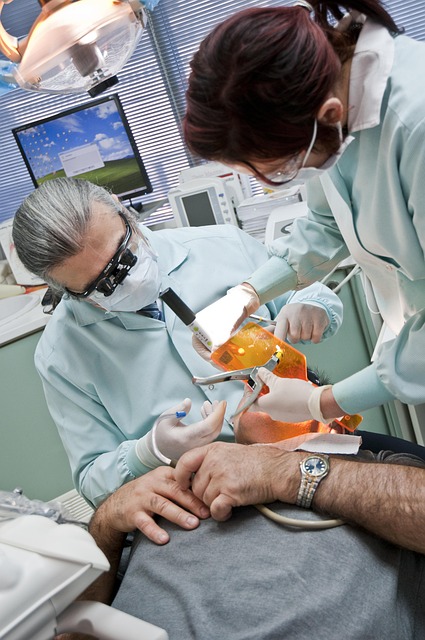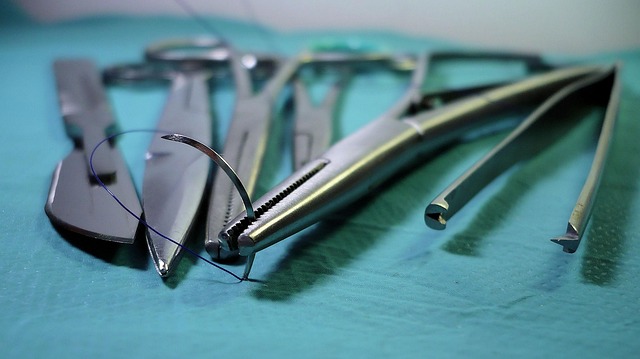Over-the-counter (OTC) wart removal solutions offer home-based convenience but limited efficacy for stubborn warts. Recognizing these limits guides individuals to seek professional help from clinics like Canterbury Wart Clinic in Birmingham. Key OTC active ingredients are salicylic acid and podophyllotoxin, which soften/dissolve warts or inhibit cell growth. Safety and effectiveness are crucial; consulting healthcare professionals ensures tailored guidance. Outpatient wart removal procedures offer quick, relatively painless solutions, with methods including cryotherapy, scraping, curettage, and topical medications. Aftercare instructions prevent infection and promote healing. Topical creams vs. liquid solutions depend on severity and preference. Recurrence prevention involves hygiene, cleaning, handwashing, and avoiding scratching. Consulting a wart clinic for reoccurrence ensures proper management.
Considering buying over-the-counter (OTC) wart removal solutions? This comprehensive guide will walk you through everything you need to know about effectively eliminating warts at home. From understanding the different removal methods, exploring common active ingredients, and assessing safety, to a detailed step-by-step outpatient wart removal procedure—we’ve got you covered. Learn how to choose between topical creams and liquid solutions, prevent recurrences, and bid farewell to unsightly warts for good.
- Understanding Over-the-Counter Wart Removal Solutions
- Common Ingredients in Effective Wart Removers
- Evaluating the Safety and Efficacy of At-Home Treatments
- Step-by-Step Guide to Outpatient Wart Removal Procedure
- Comparison: Topical Creams vs. Liquid Solutions
- Preventing Recurrence After Wart Removal
Understanding Over-the-Counter Wart Removal Solutions

Over-the-counter (OTC) wart removal solutions offer an accessible and convenient approach to addressing common warts. These products are designed for individuals seeking a simple, self-care method to eliminate warts from the comfort of their homes. OTC wart removers typically contain active ingredients that work to soften and dissolve the wart, aiding in its removal. They are suitable for minor, surface-level warts and can be a cost-effective alternative to more invasive procedures.
Understanding how these solutions function is essential when considering an outpatient wart removal procedure. While OTC options provide ease and discretion, they may not be as effective for stubborn or persistent warts. Recognizing the limitations of home treatments prompts individuals to consider when to see a specialist for warts, such as those offered at renowned clinics like Canterbury Wart Clinic in Birmingham. Seeking professional guidance ensures proper diagnosis and tailored treatment plans for more complex cases.
Common Ingredients in Effective Wart Removers

When it comes to effective wart removal, many over-the-counter solutions share similar active ingredients that work to eliminate these stubborn skin growths. One of the most common and widely used substances is salicylic acid, a beta-hydroxy acid (BHA) known for its exfoliating properties. It helps soften and dissolve the tough outer layer of warts, allowing for gradual removal. Salicylic acid is often preferred for its gentle yet persistent action, making it suitable for most skin types.
Another popular option is podophyllotoxin, a natural compound derived from the podophyllum plant. This ingredient has been used for centuries in traditional medicine and is now a key component in many private wart removal treatments available at clinics like Bristol, Cheltenham, and Blackburn. Podophyllotoxin works by interfering with cell growth, slowing down the development of warts over time. It’s particularly effective against genital warts but can also be used for common skin warts, offering an alternative to more aggressive outpatient wart removal procedures.
Evaluating the Safety and Efficacy of At-Home Treatments

When considering over-the-counter (OTC) wart removal solutions, evaluating safety and efficacy is paramount, especially for at-home treatments. Many OTC options are designed to be gentle on the skin while effectively eliminating warts. Active ingredients like salicylic acid and podophyllotoxin are commonly found in these products, known for their ability to soften and dissolve the outer layers of a wart, facilitating its removal. However, it’s crucial to understand that not all warts respond to OTC treatments, especially more persistent or hard-to-reach ones.
For individuals considering private wart removal Liverpool or looking into wart removal options for seniors, understanding potential side effects is key. Some OTC products may cause skin irritation or allergic reactions in certain people. Additionally, while these at-home procedures are generally safe, they might not be suitable for sensitive areas like the face or genital region. Consulting a healthcare professional can provide guidance tailored to specific needs, ensuring the best approach for effective wart removal without compromising safety, especially considering the variety of wart removal epsom available today.
Step-by-Step Guide to Outpatient Wart Removal Procedure

Outpatient Wart Removal Procedure: A Step-by-Step Guide
The outpatient wart removal procedure is a simple and effective way to get rid of unsightly warts, offering a quick and relatively painless experience. Here’s what to expect during this process:
1. Consultation: Begin by consulting with a healthcare professional or a dermatologist. They will assess the type and severity of your wart(s) and discuss suitable removal methods, including private wart removal Doncaster, Birmingham, or Coventry options if preferred. This step ensures the best treatment approach tailored to your needs.
2. Local Anesthesia: For some individuals, especially with more sensitive areas, a local anesthetic cream or injection may be applied to numb the affected skin temporarily. This minimizes any discomfort during the actual removal process, making it more bearable for most patients.
3. Freezing (Cryotherapy): One common outpatient wart removal technique is cryotherapy, where warts are frozen using liquid nitrogen. This procedure is quick, often taking only a few minutes per wart. After freezing, the dead skin cells and warts will start to fall off over the following week.
4. Scraping or Curettage: Your doctor may use a small, sharp tool to scrape or curette away the dead skin containing the wart. This method is particularly effective for surface-level warts.
5. Medication and Aftercare: Depending on the severity, your healthcare provider might prescribe topical medications or bandages to apply after the removal procedure. They will also provide instructions on how to care for the treated area to prevent infection and ensure optimal healing.
Comparison: Topical Creams vs. Liquid Solutions

When considering an outpatient wart removal procedure, understanding the differences between topical creams and liquid solutions is essential. Topical creams are a common choice for minor skin issues, including warts, as they offer a straightforward application process. These creams often contain active ingredients like salicylic acid or lactic acid, which gradually soften and dissolve the outer layers of the wart, encouraging its removal. This method is relatively gentle and can be performed at home under professional guidance.
On the other hand, liquid solutions provide a more direct approach to wart removal. These solutions typically contain stronger acids, such as podophyllotoxin or trichloroacetic acid (TCA), which are applied to the affected area for a specific duration before being washed off. While this method might be more effective in some cases, it is generally considered less user-friendly compared to creams. The wart removal cost per visit can vary, and some individuals may prefer the convenience of at-home treatments or seek alternatives like freezing warts (cryotherapy) available at medical facilities like those in Doncaster.
Preventing Recurrence After Wart Removal

After successfully removing a wart through an outpatient wart removal procedure like freezing or using a wart removal cream, preventing its recurrence is crucial. This involves maintaining good hygiene practices, particularly in keeping the affected area clean and dry. Regularly washing your hands, especially after touching the treated wart or any part of your body, can help eliminate any remaining virus particles that could lead to a reoccurrence.
Furthermore, it’s important not to pick or scratch the wart or the skin around it. This can introduce bacteria and stimulate the growth of new warts. If you notice any signs of a returning wart, such as redness, itching, or a small bump, consult with a Bolton wart clinic immediately. They can offer additional treatments or advise on managing the condition to prevent future outbreaks.
When considering over-the-counter wart removal solutions, understanding your treatment options and their efficacy is key. This article has guided you through the process, from identifying active ingredients to evaluating safety and comparing topical creams versus liquid solutions. After successfully removing a wart through an outpatient procedure, preventing recurrence is crucial for long-term relief. Remember, while at-home treatments offer convenience, severe or persistent warts may require professional medical attention.
